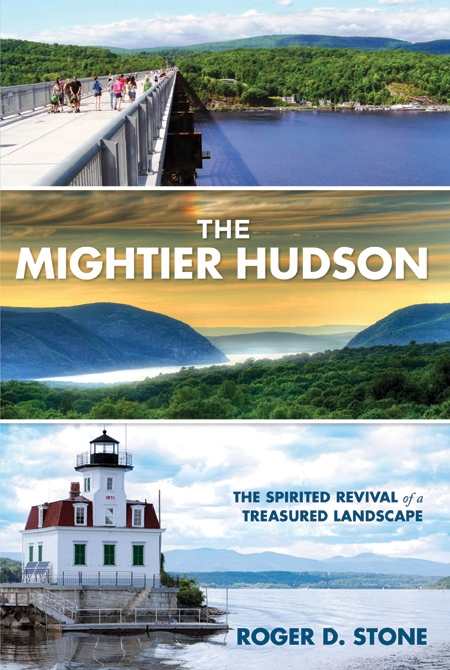It looks like you've stumbled upon a page meant to be read by our code instead of viewed directly. You're probably looking for this page.
The Mightier Hudson
The Spirited Revival of a Treasured Landscape
The Mightier Hudson opens with a picturesque description of a smiling, diverse group of pedestrians crossing the Walkway Over the Hudson, a “linear park in the sky,” and an example of recent revitalization along the river’s 150-mile estuary. In what he calls a “leading example of a region’s recovery from a grimy industrial path,” Roger D. Stone, an environmentalist and journalist who publishes the Atlantic CoastWatch newsletter, weaves history and current events into an optimistic picture of one of the most well-known cultural landscapes in America.
“This is a story less about the powerful galaxy of new institutions that enliven the [Hudson River] valley than it is about the broad range of gifted people who have founded and nurtured them.” We meet these “forward thinking” people in organizations such as the Dyson Foundation and as members of citizen groups like Friends of the Hudson. Stone acknowledges that, “Multiple forces have combined to bring about … the environmentally driven activity around the Hudson,” creating a “culture of economic creativity,” and preserving the landscape from the fate of industrial “crudscapes” such as nearby Long Island’s Nassau County.
A waterscape once shaped by container shipping, ocean liners, and cement manufacturing, the Hudson estuary was threatened with a return to heavy industry in the 1990s, with a proposal from St. Lawrence Cement, “whose dominant feature was a 363-foot smokestack.” Through local invocation of the Federal Coastal Zone Management Act and the state’s Local Waterfront Revitalization Plan, the community halted St. Lawrence Cement and created Hudson River Front Park, the area’s largest since Central Park.
Joining other books in an emerging eco-restoration genre, The Mightier Hudson provides an excellent case study for advanced undergraduates, graduates, and professionals in the areas of historic and natural resource preservation and urban and community planning, and for any visionary citizen involved in a multiple-stakeholder restoration project. The illustrations by Michael Sloan seem a bit disconnected from the text, but his hand-drawn map provides an important navigational tool for the 315-mile corridor discussed in the book.
The region still faces challenges to its “treasured landscape.” Recent proposals to extract natural gas from beneath the water table through the ecologically risky practice of “fracking” could pollute major portions of New York City’s main drinking water supply. However, the dominant feeling one takes away from the book is not one of environmental doom but one of hope for a “very special and compelling place that is well along in resetting itself.”
Reviewed by
Kai White
Disclosure: This article is not an endorsement, but a review. The publisher of this book provided free copies of the book to have their book reviewed by a professional reviewer. No fee was paid by the publisher for this review. Foreword Reviews only recommends books that we love. Foreword Magazine, Inc. is disclosing this in accordance with the Federal Trade Commission’s 16 CFR, Part 255.
